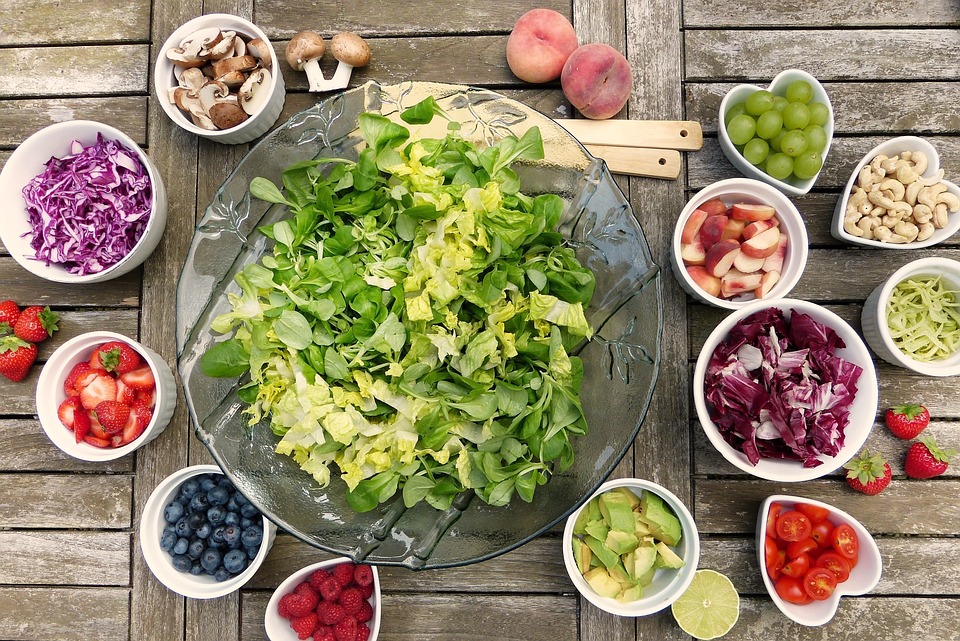The Science of Clean Eating – A Beginner’s Guide to Nourishing Your Body Naturally

In a world flooded with fad diets, quick fixes, and misleading food labels, clean eating has emerged as a sustainable and empowering approach to health. But what does “clean eating” actually mean in 2025? Is it just another trend, or is it a return to eating the way our bodies were designed to thrive?
This post breaks down the science, benefits, and actionable tips for starting your clean eating journey—without guilt, restriction, or overwhelm. Let’s clear up the confusion and show you how to nourish your body naturally.
What Is Clean Eating (And What It Isn’t)?
Clean eating isn't a diet—it's a lifestyle. It's about choosing whole, minimally processed foods that fuel your body, support mental clarity, and reduce disease risk. Here’s what it includes:
- Fruits and vegetables (organic when possible)
- Whole grains like oats, quinoa, and brown rice
- Lean proteins (plant-based or ethically sourced meats)
- Healthy fats (avocados, nuts, olive oil)
- Plenty of water and herbal teas
And here’s what clean eating does not mean:
- Deprivation or extreme calorie restriction
- Cutting out entire food groups (unless medically necessary)
- Obsessively counting macros or calories
Why Clean Eating Works: The Science Behind It
Your body is a biochemical machine that runs best on nutrient-dense fuel. When you eat real food, you support:
- Cellular repair and detoxification: Clean foods support the liver, kidneys, and gut microbiome.
- Mental clarity: Processed sugar and trans fats cloud your brain. Whole foods improve neurotransmitter balance.
- Stable blood sugar and energy: No more crashes and cravings every 2 hours.
- Long-term health: Reduced risk of heart disease, diabetes, obesity, and certain cancers.
Beginner Tips: How to Start Eating Clean (Without Going Crazy)
- Shop the perimeter of the grocery store: That’s where the real food lives—produce, meat, eggs, dairy.
- Read labels carefully: If you can’t pronounce it, your body probably can’t process it.
- Cook at home 80% of the time: This gives you full control over ingredients and portions.
- Meal prep once a week: Batch-cook grains, chop veggies, and pre-pack snacks.
- Hydrate constantly: Sometimes thirst masks itself as hunger or fatigue.
Sample 1-Day Clean Eating Meal Plan
Breakfast: Overnight oats with chia seeds, banana, and almond butter
Snack: Apple slices with hummus
Lunch: Grilled salmon, quinoa, and roasted vegetables
Snack: Greek yogurt with berries and flax
Dinner: Stir-fried tofu with brown rice and broccoli
Clean Eating on a Budget: Yes, It’s Possible
- Buy frozen fruits and vegetables
- Choose in-season produce
- Buy whole grains and legumes in bulk
- Skip pre-packaged health foods (often overpriced)
Common Mistakes to Avoid
- Obsessing over perfection: Aim for progress, not purity.
- Overeating “healthy” junk: Organic cookies are still cookies.
- Letting social media dictate your food: Do what works for YOUR body.
Final Thoughts: Clean Eating Is a Form of Self-Respect
Every bite you take is either fueling disease or fighting it. Clean eating is not about rules—it’s about respecting your body and giving it what it needs to function, feel, and perform at its best.
Start small. Replace one processed meal a day with a whole food alternative. Drink more water. Choose food that has ingredients—not food that is ingredients.
Your body isn’t a trash can. Stop treating it like one. Eat clean, live clean, and feel the difference.
?? What’s your biggest challenge with clean eating? Share your thoughts or routines in the comments!
Comments
Post a Comment